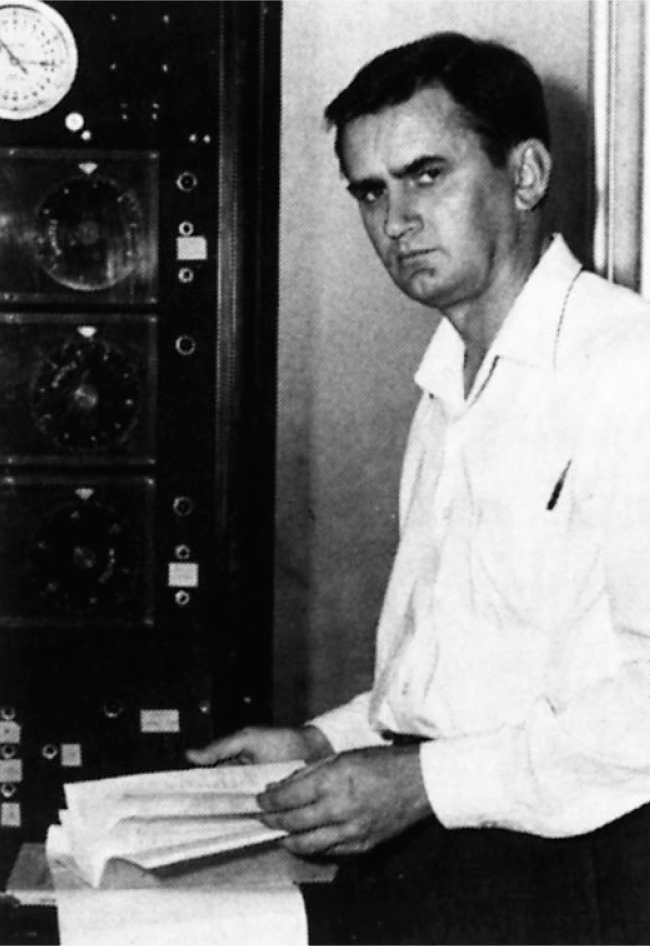Gordon James Stanley
DOI: 10.1063/1.1564362
Gordon James Stanley, one of the pioneers of radio astronomy, died on 17 December 2001 in Monterey, California, of complications from progressive supranuclear palsy.
Stanley was born in Cambridge, New Zealand, on 1 July 1921, and, at age six, moved with his parents to Australia. He completed his engineering studies at Sydney Technical College, now part of the University of New South Wales, and received the degree of Associate of the Sydney Technical College in 1945.
In 1945, he joined the receiver group of the Australian Commonwealth Scientific and Industrial Research Organization (CSIRO) Radio-physics Laboratory, where he developed some of the earliest equipment used to study the radio emission from the Sun and the Galaxy. He teamed up with John Bolton and Bruce Slee in 1947 for a series of novel experiments to make the first accurate measurements of radio source spectra. The team convincingly demonstrated the nonthermal nature of cosmic radio noise, which later was understood to be synchrotron radiation from energetic electrons spiraling in weak cosmic magnetic fields. But as the celestial coordinates of the radio sources were not well determined, there were no known optical counterparts to the increasing number of cosmic radio sources being detected.
During World War II, shipboard radar operators sometimes noticed that the return signals from airplanes flying close to the horizon showed an interference pattern. The reflected signal from the surface of the ocean combined with the direct signal to give alternately constructive and destructive interference as the angle to the aircraft changed. Stanley, together with Bolton and Slee, exploited that effect using sea interferometers on cliffs along the coasts of Australia and New Zealand to measure the size and accurate position of four strong radio sources. This work led to their identification in 1949 of one of those sources with the Crab nebula. Two of the other sources were identified with galaxies located beyond the Milky Way. It was difficult for Bolton, Stanley, and Slee to accept the enormous radio luminosity implied by their results, and it would be several years before the astronomical community would acknowledge the extragalactic nature of radio stars.
Nearly all of the early investigations in radio astronomy were pursued by scientists who, like Stanley, had a strong background in radio and electronics rather than in astronomy. But the sea interferometer observations attracted the attention of astronomers—such as Jan Oort in the Netherlands—and astrophysicists, and marked the beginning of modern radio astronomy.
Stanley left Australia in 1955 to join Bolton, who had been asked to start a radio astronomy program at Caltech. Following what he later described as a “frustrating search” throughout southern California for a site free of manmade radio interference, Stanley found the ideal location for a radio telescope in the Owens Valley. In 1955, he developed the first radio interferometer operating above a few hundred megahertz and earned a reputation as someone who could design, build, and fix just about anything that involved electronics. His low-noise receivers, which were affectionately known as Stanley Steamers, made the Caltech interferometer the most sensitive radio telescope in existence at the time. He taught me how to repair a noisy receiver by tapping the 1N21 diode mixer with a hammer or, if no hammer was available, by throwing the diode on the floor. Most of the time, this resulted in the diode’s not working at all, but in a few cases, the original very-low-noise performance was miraculously restored.
From 1961 to 1975, Stanley directed the research at the Owens Valley Radio Observatory. The precise measurements of radio source positions with the OVRO interferometer led to the identification of new and increasingly distant radio galaxies and the discovery of quasars by Rudolph Minkowski, Maarten Schmidt, and others. Most of the research was done by students and postdoctoral staff, who would later become distinguished members of the astronomical community.
Stanley did not enjoy the administrative responsibilities associated with being the director of a major government-funded university facility. Facing the ever-increasing levels of bureaucratic interference from the Caltech administration and NSF, he retired from Caltech in 1975 to return to his true love—radio engineering. Following several years with the Honeywell Corp, he started his own microwave company, where he developed a variety of novel instruments for the US and other governments.
Stanley, whose career was long and varied, had a strong work ethic, yet he remained modest about his own achievements. Throughout his tenure as director of the OVRO, he did not put his name on any publication of work done with the students or staff of the observatory.
In addition to science and electronics, Stanley enjoyed literature, poetry, art, and politics. He loved music, could quote at length from Shakespeare, and balanced all those interests with a lifelong love of sports.


More about the Authors
Kenneth Kellermann. National Radio Astronomy Observatory, Charlottesville, Virginia, US .




